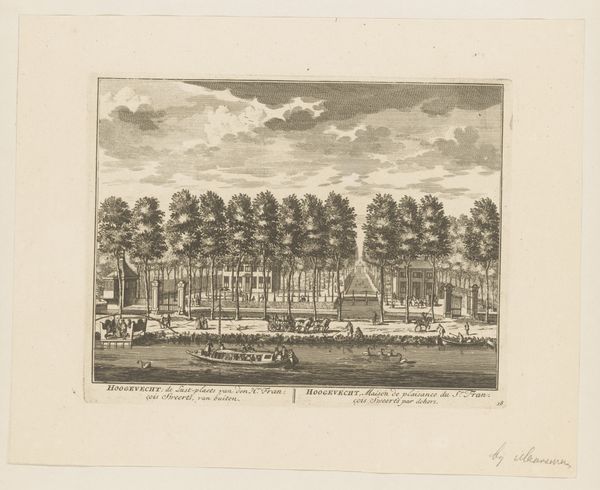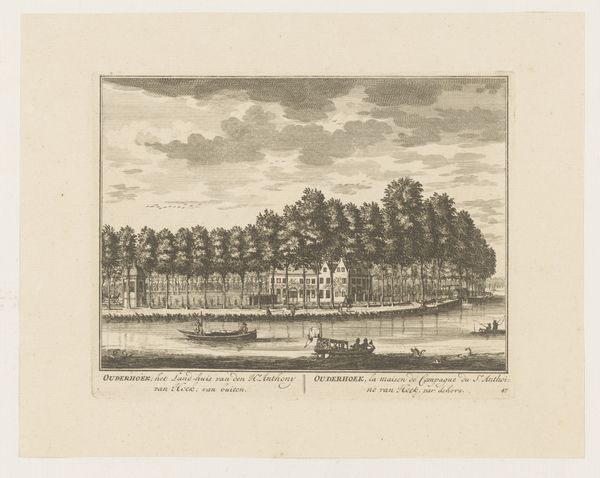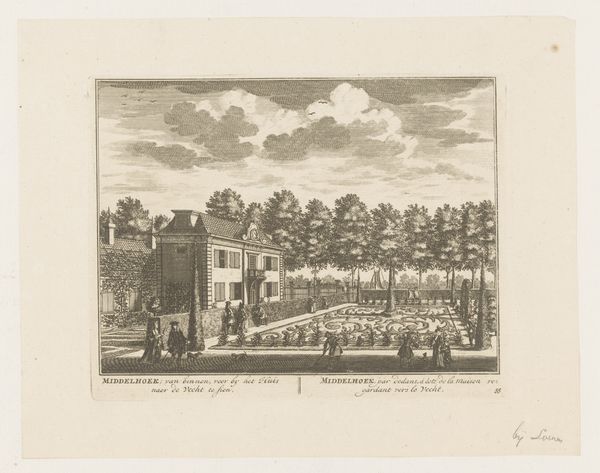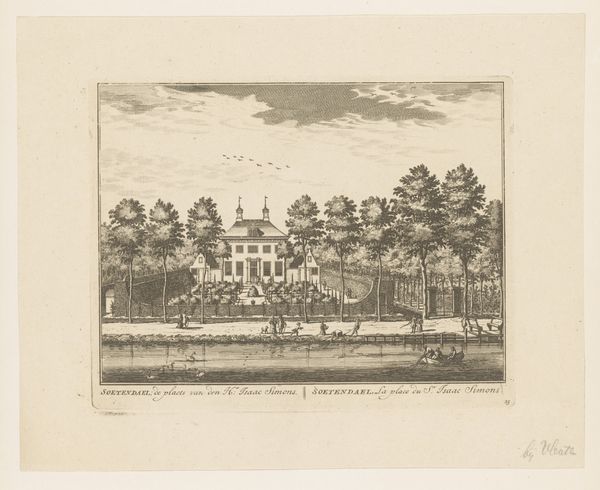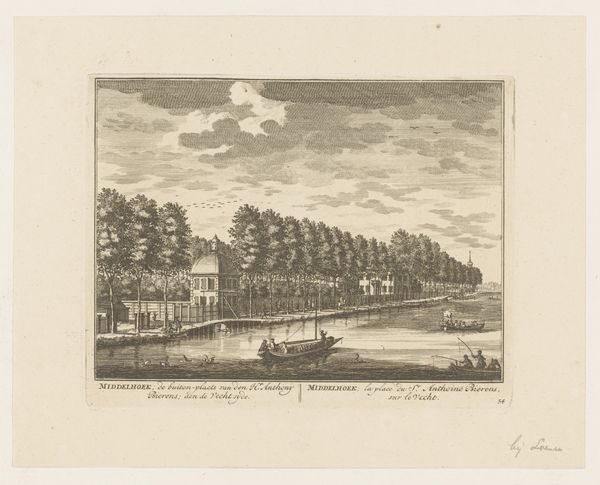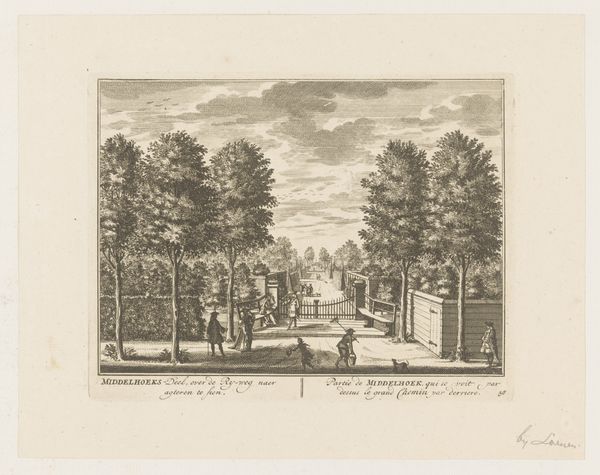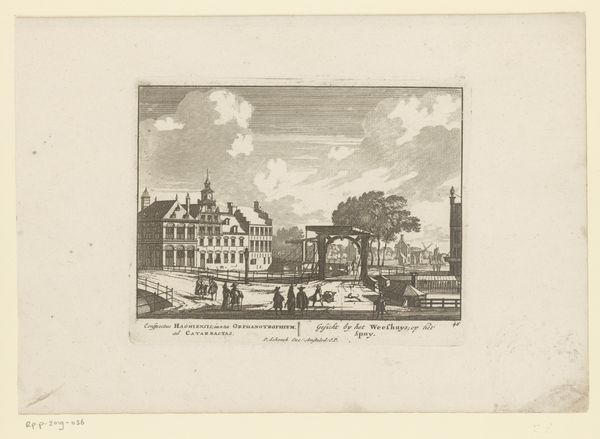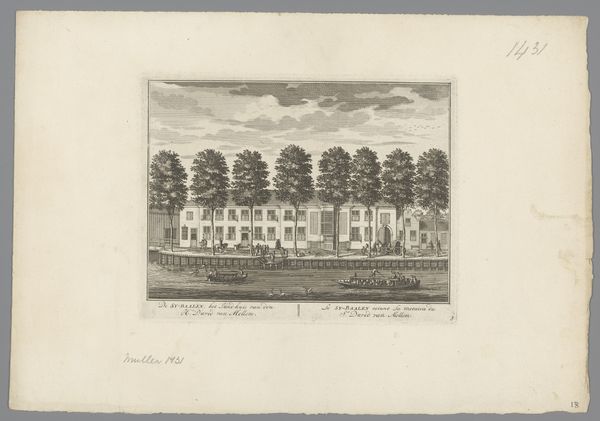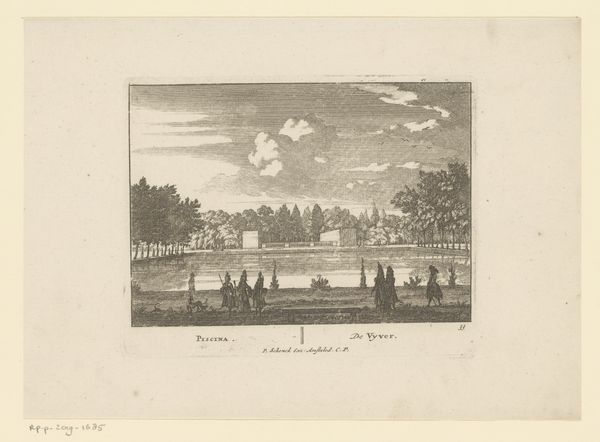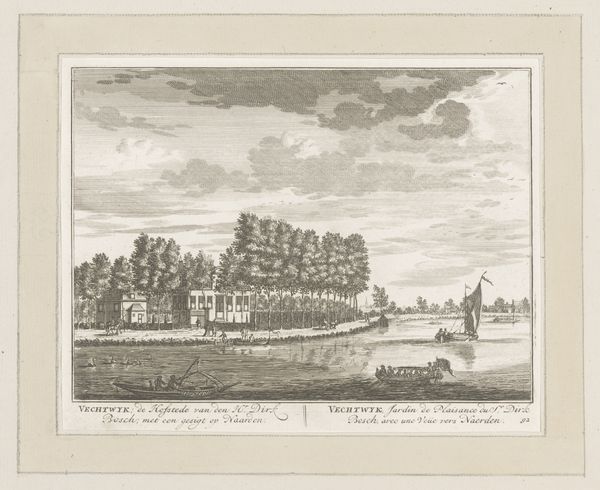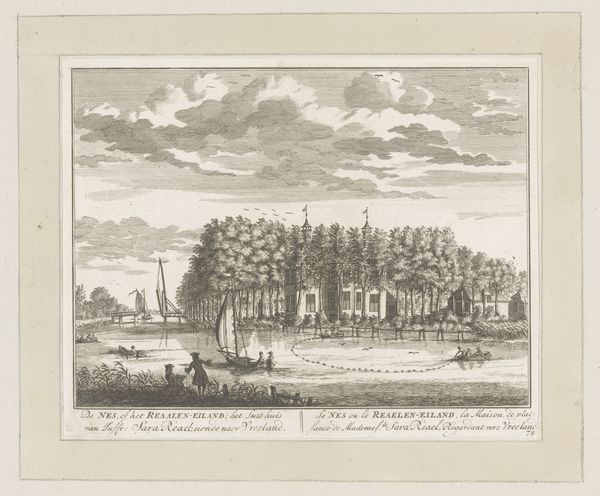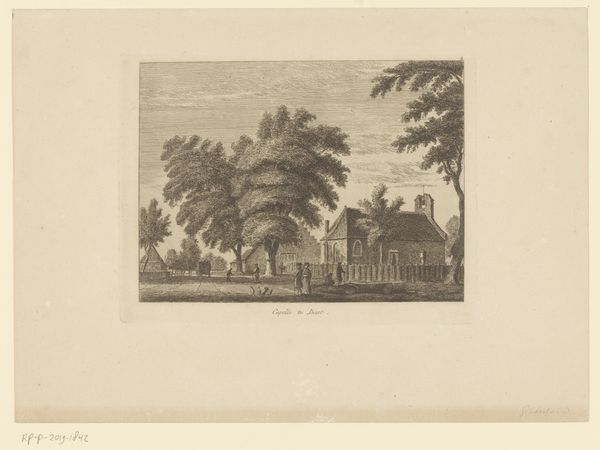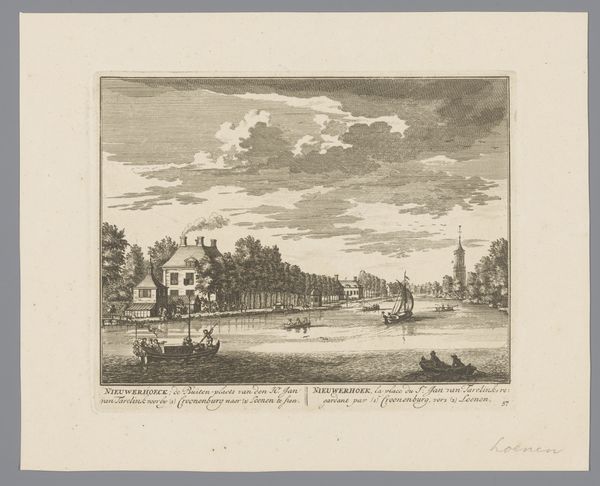
Gezicht op de buitenplaats Otterspoor aan de Vecht bij Maarssen 1719
0:00
0:00
danielstopendaal
Rijksmuseum
print, engraving
#
dutch-golden-age
# print
#
old engraving style
#
landscape
#
cityscape
#
engraving
Dimensions: height 158 mm, width 204 mm
Copyright: Rijks Museum: Open Domain
Editor: We're looking at "Gezicht op de buitenplaats Otterspoor aan de Vecht bij Maarssen," an engraving from 1719 by Daniël Stopendaal. It has this very ordered, almost mathematical feel to the composition. How do you see this artwork? Curator: Its geometric rigor is immediately striking. The artist’s deployment of linear perspective is, of course, a primary structural element, organizing the composition around a central vanishing point that guides the eye. The repetition of vertical elements—the trees—further reinforces the structured nature of this vista. Note how these linear devices impose a sense of control over the natural environment. Editor: Control, yes, like taming the landscape. But is that the whole story? Curator: Not entirely. The contrast between the meticulously rendered architectural forms and the softer, more organic shapes of the trees and clouds is crucial. Observe how the engraving technique itself—the precise lines and controlled hatching—contributes to the overall impression of order, yet contains variations in tonality, and thereby texture. Editor: It is really quite sophisticated how Stopendaal can use the limited color palette of engraving to represent so much depth and texture. Curator: Precisely. We are witnessing an interplay of structure and texture, order and implied chaos. This dynamic between binaries enlivens the artwork. Editor: So it's about more than just depicting a place; it’s also about the tension between the constructed and the natural. Fascinating! Curator: Exactly. Understanding how the visual elements function independently and together, that is where we discern the core meanings in the artwork. I'm glad we’ve had time to review it.
Comments
No comments
Be the first to comment and join the conversation on the ultimate creative platform.
